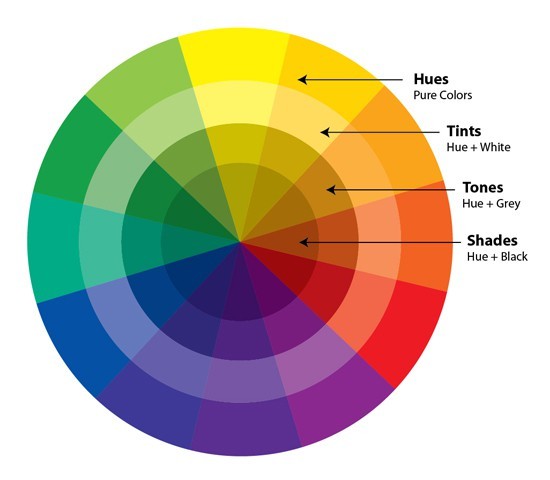Color, Hue, Tint, Tone, and Shade
Many people use terms like “hue” and “color” or “tint” and “shade”
interchangeably, but the terms have distinctly different meanings. Color is a
very general term used to describe every hue, tint, tone, or shade we can see.
Hue refers to the dominant color family.
Hue refers to the origin of the colors we can see. Primary
and Secondary colors (Yellow, Orange, Red, Violet, Blue, and Green) are
considered hues; however, tertiary colors (mixed colors where neither color is
dominant) would also be considered hues.
Tint refers to any hue or mixture of pure colors to which
white is added. Pastel colors are generally tinted colors. Tinted color remains
the same color, but it is paler than the original. When mixing a tint, always
begin with white paint and gradually mix in small amounts of color until you’ve
achieved the tint you want.
Tone is a hue or mixture of pure colors to which only pure gray
is added (equal amounts of black and white). Adding gray to a color will make
the intensity much duller. Beware of mixing too much gray into a hue as it can
become over-dulled and virtually impossible to restore the brilliance.
Shade is a hue or mixture of pure colors to which only black
is added. It contains no white or gray. Shade darkens the color, but the hue
remains the same. When mixing a shade, begin with the color itself then add
black one drop at a time.
















![Toni Kroos là ai? [ sự thật về tiểu sử đầy đủ Toni Kroos ]](https://evbn.org/wp-content/uploads/New-Project-6635-1671934592.jpg)


